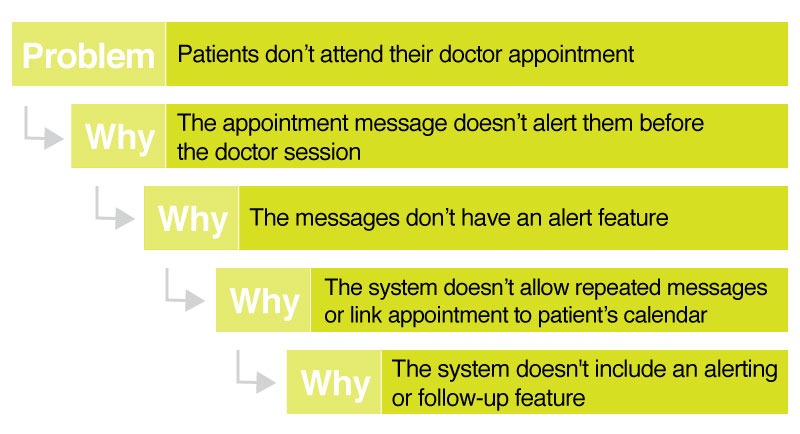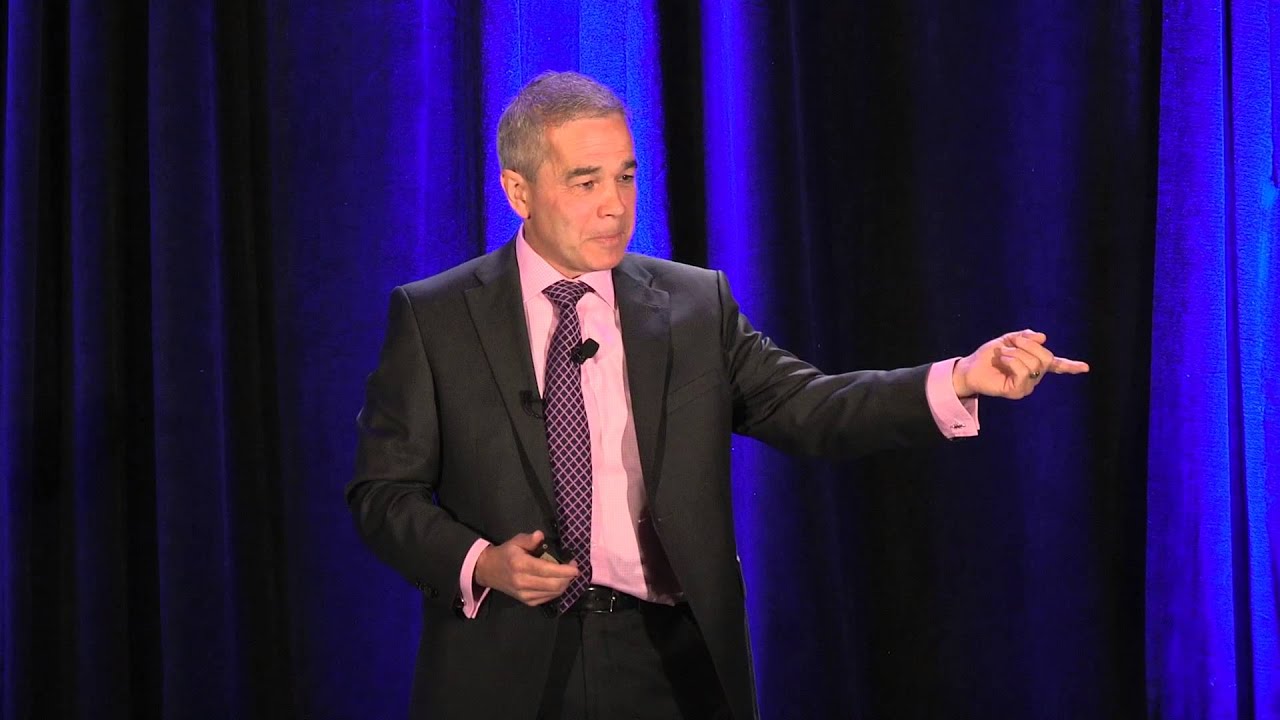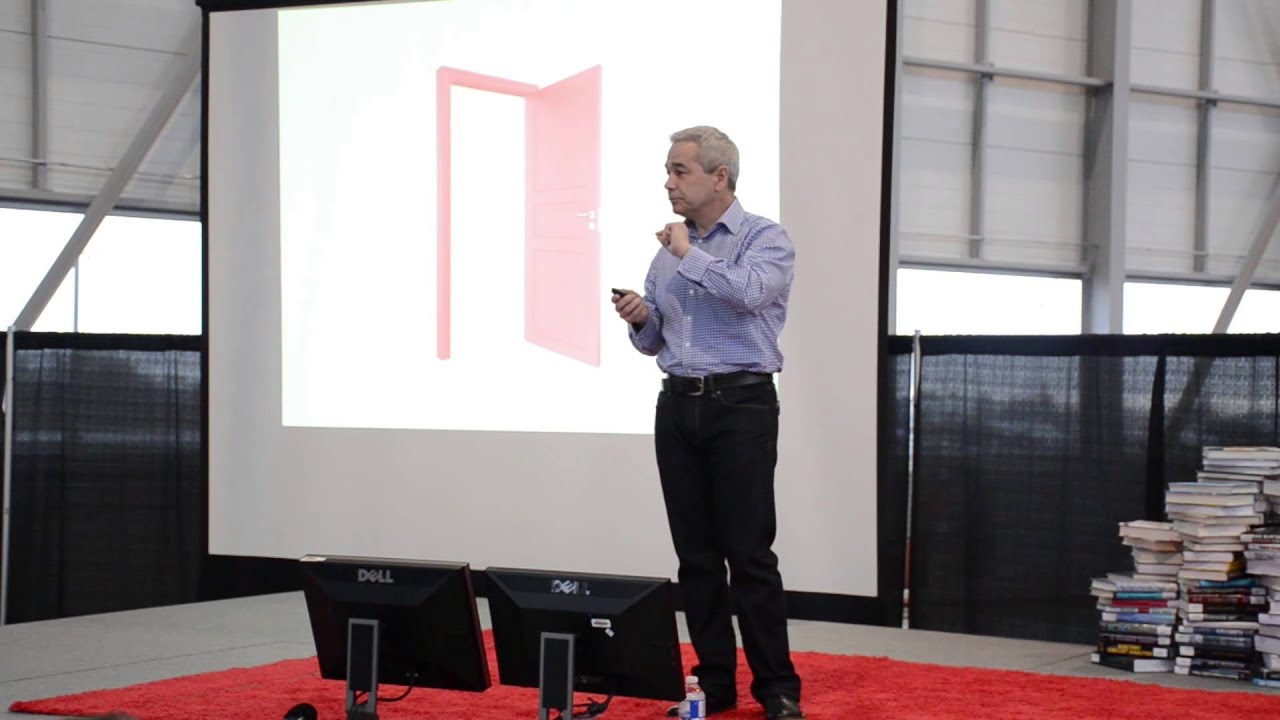What is the 5 Whys Technique?
On this page
- Definition of the 5 Whys Technique
- Origin
- Example
- 6 steps to a successful 5 Whys Analysis
- 5 Benefits of the 5 Whys strategy of problem-solving
- 11 rules to perform the 5 whys technique correctly
Is your team failing to meet deadlines? Or doesn’t produce the expected outcomes? Your organization is dealing with a specific problem?
Use the 5 Whys technique to get to the bottom of it and closer to a solution.
What is the 5 Whys Technique?
The 5 Whys Technique is a simple but great tool you can use to get to the root of a problem. This technique explores the cause-and-effect relationships underlying a particular problem by repeating the question Why? five times. Each question refers to the previous answer.
Origin of the 5 Whys Technique
The technique was originally developed by Sakichi Toyoda, the Japanese industrialist and inventor who started the Toyota family companies. Sakichi used the 5 Whys tool within the Toyota Motor Corporation during the evolution of its manufacturing methodologies.
Example of a 5 Whys Analysis
Let’s say your team has been failing to meet their target for the past five months. Here’s how to apply the 5 whys analysis to your situation:
Problem: Team failed to meet the target for five months in a row
Why?
Two team members were slow to deliver.
Why?
They don’t know how to use the systems.
Why?
When they were hired, they did not receive instructions on how to use them.
Why?
The manager who was in charge of teaching them had to leave the office for a few days to take care of a family situation who required his urgent attention. No other person was assigned to teach them.
Why?
There is no system in place which allows managers to quickly appoint someone else when urgent situations arise.
Now that you have discovered the root cause of the problem, you can easily design a solution to eliminate this problem.
Here is another example of applying the 5 Whys technique:

Source: designorate.com
6 steps to a successful 5 Whys Analysis
- State the specific problem that needs to be addressed.
- Gather your team in one room.
- Use a whiteboard.
- Write the specific problem on the whiteboard.
- Ask the first why and invite team members to provide relevant and specific answers.
- Repeat the whys until the root cause of the problem is identified.
- Develop an action plan to remove the problem from the system.
- Break the action plan into tasks which you assign to each team member.
5 Benefits of the 5 Whys strategy of problem-solving
![]() Identify the cause, not just the symptoms.
Identify the cause, not just the symptoms.
![]() Perform an evidence-based analysis.
Perform an evidence-based analysis.
![]() Eliminate issues in your system for good.
Eliminate issues in your system for good.
![]() Seek improvements and welcome change.
Seek improvements and welcome change.
![]() Build a culture that embraces progress.
Build a culture that embraces progress.
11 rules to perform the 5 whys technique correctly
- Define the problem as accurately and completely as possible.
- Require from your team members complete honesty in answering the questions.
- Be determined to get to the bottom of the problem and resolve it.
- Don’t stop at symptoms, go beyond them.
- Ask the right questions.
- Support your team into being honest.
- Be open to hearing answers that you might not like.
- Five is just the rule of thumb, continue to ask questions until you get to the root cause.
- Ensure that all answers are based on facts and knowledge.
- Assess the process, not people.
- How do you know when you have found the root cause? When eliminating it, you will have prevented the error from occurring again.
Are you going to use the 5 Whys technique?
Join the Conversation
We’d love to hear what you have to say.
Get in touch with us on our LinkedIn Group, Facebook Group or Twitter.
7 Things you might not know about Robert Murray
Based out of the Vancouver Lower Mainland, Robert Murray is a #1 Best Selling Author, Global Speaker and Business Strategist. He has written three critically acclaimed books on leadership: “It’s Already Inside,” “Unlocked,” “Simple Leadership – Simply Said.” that are a collection of short stories that help his readers relate to and nurture the leader within themselves.
- He believes in people and their limitless potential. He wrote Unlocked to help leaders unlock their remarkable greatness through using their ‘whole brain’ – both the logical brain as well as the emotional mind to become a more complete leader – the leader he calls a ‘Practical Leader’.
2. He is able to see simple, executable and engaging solutions where others see only problems. Has worked with senior executives of multi-billion dollar ventures to improve their future, further engage their community stakeholders, and essentially fix their problems. Bob is experienced in virtually all areas of the corporate development, and he is passionate and energized about helping companies be the best they can be.
3. Bob is a storyteller. He is a visionary, he is dynamic and he is engaging. He shares his energy, enthusiasm and knowledge in hopes of helping people discover their limitless potential. He tells stories which help people find the keys to unlock the innate leader that lies within.
4. Coming from a farming family in the heart of Canada, and working my twenties as an industrial electrician, he learned life skills that are hard to find in a classroom. Expertise such as: problem solving, emotional intelligence, and how to selflessly serve others.
5. Getting his marketing degree at University at night, while working through junior level marketing roles during the day, he learned discipline, drive and to always chase his passion.

6. The single biggest mistake he sees virtually everyday in businesses on every corner of the globe are leaders that don’t take culture seriously and think that the way to success is complex strategies that no one understands. Robert believes that successful businesses have values aligned cultures and simple strategies.
7. He has built strategy for over 200 organizations from Fortune 50 to small 10 person businesses.

